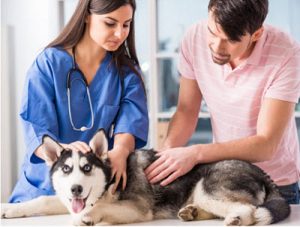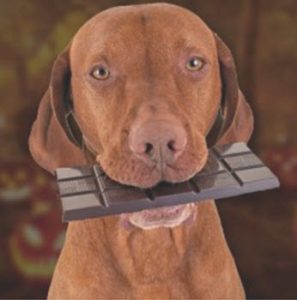 The staff at your vet’s surgery is trained to expertly assist both you and your pet, even when things get tough. But there’s a chance you might be accidentally making their jobs more difficult in several different ways. From not being upfront about your pet’s behaviour to getting too involved during the diagnostic process, many pet parents are completely oblivious about best practices in the exam room.
The staff at your vet’s surgery is trained to expertly assist both you and your pet, even when things get tough. But there’s a chance you might be accidentally making their jobs more difficult in several different ways. From not being upfront about your pet’s behaviour to getting too involved during the diagnostic process, many pet parents are completely oblivious about best practices in the exam room.
Are you driving the staff at your local vet nuts? Try to avoid the following “vet peeves” if you want to be a dream client.
Putting the staff in danger
Many dogs don’t like the unusual handling that’s part of veterinary exams, but some animal responses to clinical handling are extreme enough to cause actual harm to pet professionals. Not being honest about your pet’s reactivity puts your veterinary technician and vet in danger and can impact the diagnostic process. It’s important to be realistic about your pet’s anxiety so the staff can strategise a treatment plan to minimize canine stress.
Often, that plan might include a dog muzzle for reactive dogs, which can be unnerving for both patient and pet parent if they haven’t had exposure to one before. But muzzling keeps your practitioner safe. Dr. Holly Brooks, a veterinarian at Quakertown Vet Clinic, says, “One bite can ruin my career. Ten minutes in a muzzle will not ruin your dog’s life.”
Being on your mobile phone
Mobile phones have invaded the examination room, to the dismay of pet health professionals. And many vets blame the growing influence of social media for causing clients to second-guess their vet’s treatment plans.
Dr. Google and your pet’s breeder are not medically trained! “Listen and be receptive to your vet’s opinion. Isn’t that why you brought your pet in to be seen in the first pllace?”
Veterinarian health care is a team effort, and your pet’s well-being is dependent on you understanding the suggested treatment plans and medication instructions. In the future, keep your phone in your pocket and tune in to your veterinarian instead.
Coddling your pet
It’s understandable to want to be there for your pet during a health examination but doing so can make the experience worse for your dog. Vets don’t want to cause undue pain or stress during exams.
In fact, their job is easier if both the pet parent and patient are relaxed during the procedure, so attempting to help by standing front and centre as your vet conducts the exam, or squealing if your pet whines, will likely ramp up the tension in the room.
It’s often easier if pet parents step out of the room if they’re unable to remain calm during the exam. “Sometimes a pet is exceptionally better behaved away from their owner “. Sometimes a pet is trying to protect his or her owner or is feeding off their anxiety, and once their parent leave the room, vets can work with them much more easily.”
It might feel counterintuitive to leave your pet during a tense moment, but if your pet professional suggests it, it’s likely the procedure will be quicker and easier for all parties.
Showing a Lack of Respect
Vet go through years of school at great expense to add the letters “DVM” after their name, but some pet owners seem to forget that fact their vet’s youthful appearance works against him or her in her practice, and clients frequently question if she’s “really” a vet or will comment that she looks too young to be a vet. In a similar show of disrespect, some clients are guilty of calling their vets by their first name during examinations.
If you’ve sought treatment for your pet at an accredited practice under the care of a Doctor of Veterinary Medicine, you should treat your practitioner with the respect they deserve. Refraining from making comments about your vet’s appearance and using the appropriate title are simple and obvious ways to stay on your vet’s good side.
How to make your vet love you: Client Best Practices
- training your pet for examinations in advance of actual vet appointments will help your dog feel more at ease with clinical handling
- “It can be as simple as getting them used to being comfortable with their face, feet and other body parts being touched or held”
- getting your reactive dog to happily wear a basket muzzle at home and then take the muzzle with you to the appointment. This can help to minimise stress on both sides of the examination table.
- decrease you dog’s anxiety by giving your dog a few drops of Rescue Remedy to calm him or her down.
To summarise, during the examination, be straightforward about your pet’s behaviour so that your health care team can plan for the best treatment process possible. Hang up your phone and be fully present while you’re at the appointment. Answer questions honestly, whether they come from the front desk staff, veterinary technician or vet, and trust that everyone wants to help your pet be well.

